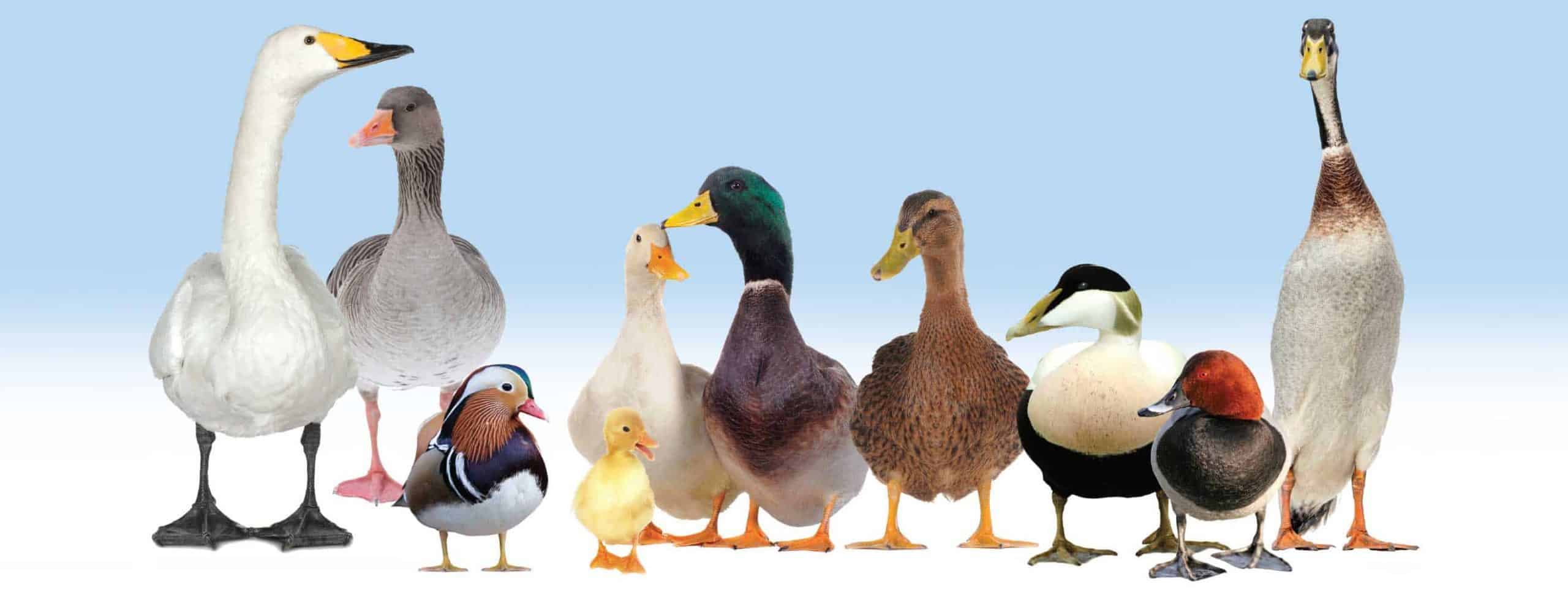Why should I care about genetics?
The answer has to be that if you breed waterfowl with a view to obtaining birds of a particular type, then, like it or not, you are applying genetics. You are accepting that your birds are able to pass on features (in the form of genes) to their offspring, and that, by breeding only from […]
Domestic Geese
Geese have always had the reputation of being guardians of the farmyard but, for breeders and waterfowl keepers, they have a wider use as pure breeds for exhibition, ‘lawn mowers’ and pets. Geese – the original auto-mowers Well reared, geese are responsive, intelligent birds and deserve a better reputation than they are often given. Greylag […]
Domestic Ducks
With the exception of the Muscovy, all domestic ducks are believed to be descendants of the Mallard Anas platyrhynchos. As pets, table birds or for exhibition, there’s a duck for everyone – Morag Jones Even in the wild Mallard, there is variation in shape, size and plumage. This is what enables the evolution of the […]
True Ducks
Seven tribes, two of which only have one member (they are monophyletic), are included in the subfamily Anatinae — the true ducks. Although it can seem confusing that something once routinely called a goose is actually a duck, their genetic heritage has only been revealed relatively recently. Some commonly-used terms fall naturally together — they […]
Swans, Geese & Allies
These are the tribes that make up the subfamily Anserinae. Several odd waterfowl are in this subfamily and have unique challenges in aviculture. Click the thumbnails for species accounts of the swans, geese and their allies. Pink-eared Duck Freckled Duck Cape Barren Goose Coscoroba Swan True Swans The largest and most majestic of waterfowl, the […]
Stifftails
The stifftails are a tribe distinctive in their appearance and behaviour, characterised by their long erect tails. The majority are southern hemisphere ducks although Ruddy Duck and White-headed Duck are from North America and Europe respectively. The most aquatic of all waterfowl, it is important to supply grains to stifftails on the water, especially when stock […]
Whistling Ducks
Whistling ducks were formerly known as tree ducks, but not all like trees. They are much less arboreal than the perching ducks for instance. The name whistling duck is far more appropriate and descriptive, as all have calls ranging from distinctive high-pitched shrill sounds to clear or squeaky whistles. Range Whistling ducks live in the […]
Magpie Geese
The primitive Magpie Goose is in a separate tribe all on its own – the Anseranatidae. The scientific name Anseranas semipalmata, translates directly as ‘half-webbed goose-duck’. It possibly forms the links between the wildfowl and the more terrestrial neotropical screamers. Click the image for more information. Magpie Goose Sadly (unless you have a huge staff), […]
Light Geese
The lighter breeds of geese certainly need less space to keep, but still need good grazing to perform well. Some of them may fly a little, so you may need to anticipate this when planning your pens. Light breeds presently standardised are: Chinese Czech Franconian Pilgrim Roman Sebastopol Shetland Steinbacher Chinese Czech Franconian Pilgrim Roman […]
Medium Geese
Medium breeds presently standardised are: Brecon Buff Buff Back and Grey Back Pomeranian West of England Brecon Buff Buff Back and Grey Back Pomeranian West of England Full exhibition standards for these breeds may be found in the British Waterfowl Standards.


